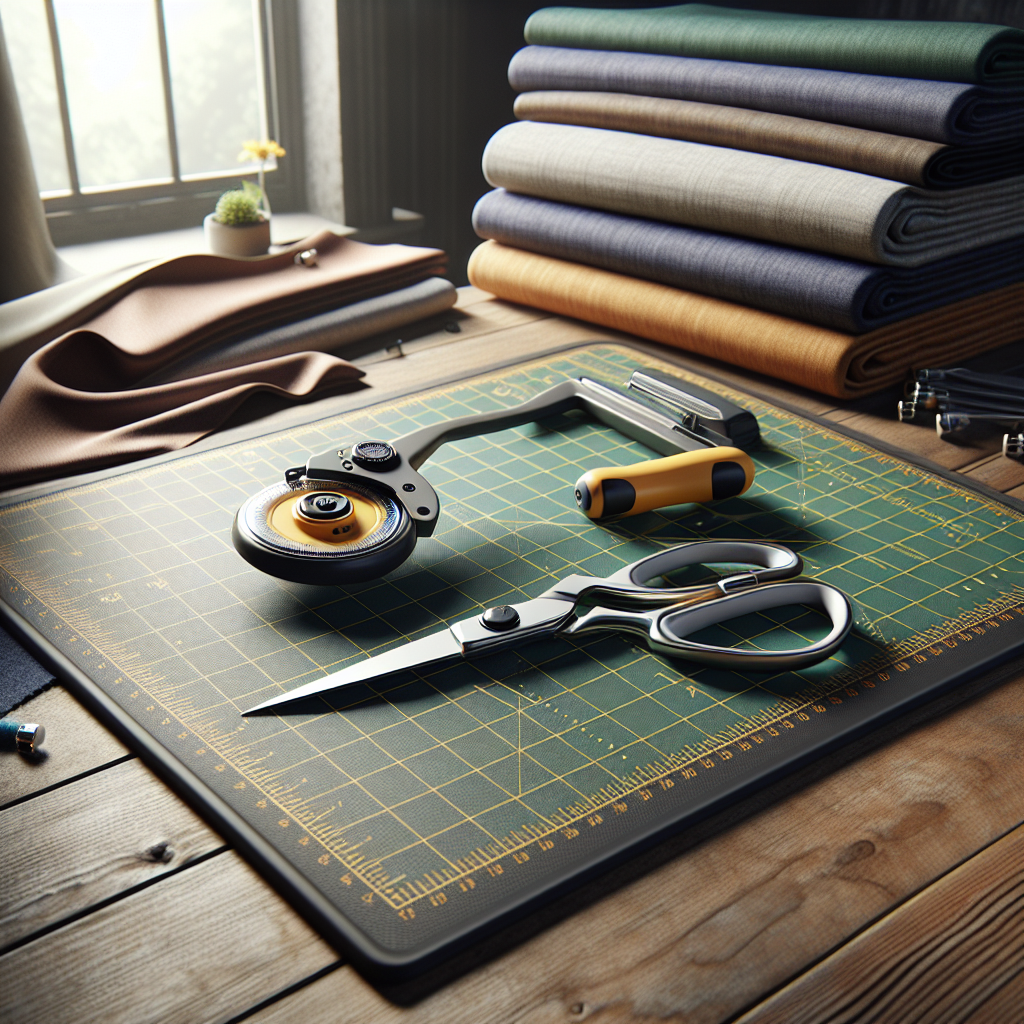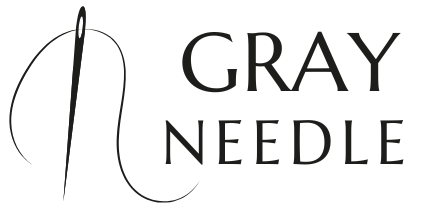When it comes to sewing, accurate fabric cutting is a crucial skill that can make or break your project. A precise cut not only ensures that your patterns fit together seamlessly but also enhances the overall quality of your finished product. In this accurate fabric cutting guide, we will explore essential techniques that every sewing enthusiast should master.
Understanding the various tools available for fabric cutting is the first step towards achieving accuracy. From rotary cutters to scissors, each tool has its unique benefits. Here are some key tips to keep in mind:
- Choose the Right Tool: Depending on the fabric type and the complexity of the design, some tools may be more suited than others.
- Prepare Your Fabric: Always pre-wash and press your fabric before cutting to avoid any shrinkage later on.
- Use a Cutting Mat: A self-healing cutting mat protects your surfaces and helps you achieve cleaner cuts.
Developing a steady hand and practicing your cutting technique will lead to consistent results. It’s also beneficial to measure twice and cut once—a mantra that resonates deeply in the sewing community. The right preparation and mindset will empower you to create stunning garments and projects with confidence.
Join our community at GrayNeedle.com to discover more tips and share your journey with fellow sewing enthusiasts. Visit our website to learn more and get started today! Click here.
Essential Tools for Precision Fabric Cutting
To achieve precision in fabric cutting, having the right tools at your disposal is essential. The selection of tools can dramatically affect the accuracy of your cuts and, consequently, the quality of your sewing projects. Here’s a breakdown of the essential tools every sewing enthusiast should consider:
- Rotary Cutter: A rotary cutter is a circular blade that rolls across the fabric, making it ideal for cutting multiple layers or intricate shapes. It provides clean, straight cuts and is often preferred for quilting.
- Fabric Scissors: Invest in a good pair of fabric scissors that are designed specifically for cutting fabric. These scissors should be sharp and kept exclusively for fabric to maintain their effectiveness.
- Cutting Mat: A cutting mat not only protects your work surface but also provides a grid for precise measurements. It helps in achieving straight cuts and prevents the blade from dulling.
- Ruler or Straight Edge: A clear, sturdy ruler helps guide your cuts, especially for straight lines and accurate measurements. It’s a must-have when working with patterns or when creating straight edges.
- Chalk or Fabric Markers: Use fabric chalk or markers to make temporary markings on your fabric. This helps in marking seam lines, cutting lines, or pattern placements without leaving permanent stains.
Equipping yourself with these tools will set the foundation for successful fabric cutting. Each tool plays a vital role in ensuring that your patterns are cut accurately, which is fundamental to achieving professional results in your sewing projects.
Step-by-Step Guide to Measuring and Marking Fabric

Accurate measuring and marking are critical steps in the fabric cutting process. Without precise measurements, your finished product may not fit or look as intended. Here’s a step-by-step guide to help you measure and mark your fabric effectively:
- Prepare Your Workspace: Ensure that your cutting area is clean and well-lit. Lay your fabric flat on a cutting mat or table to prevent wrinkles.
- Gather Your Tools: Have your measuring tape, ruler, fabric scissors, chalk or fabric marker, and rotary cutter ready.
- Understand Your Pattern: Before measuring, familiarize yourself with the pattern instructions. Check for any specific measurements or markings required.
- Measure Twice: Use a measuring tape to measure your fabric according to the pattern dimensions. It’s beneficial to measure twice to confirm accuracy. Mark the measurements lightly with chalk or a fabric marker.
- Use a Ruler for Straight Lines: For straight edges, use a ruler or straight edge to connect your markings. This helps ensure that your cuts are straight and accurate.
- Mark Seam Allowances: If your pattern requires seam allowances, be sure to mark these alongside your cutting lines. This will ensure you don’t cut too close and can sew your pieces together seamlessly.
- Double-Check Before Cutting: Before making any cuts, double-check your measurements and markings. Ensure that everything aligns with the pattern instructions.
Following these steps will enable you to measure and mark your fabric with precision, setting you up for successful and accurate fabric cutting.
Techniques for Cutting Different Types of Fabrics
Each type of fabric requires specific cutting techniques to ensure clean edges and prevent fraying. Understanding these techniques is essential for achieving professional results. Here are some effective strategies for cutting different types of fabrics:
- Cotton: Cotton is one of the easiest fabrics to cut. Use sharp fabric scissors or a rotary cutter for straight cuts. Always cut with the fabric’s grain to reduce the likelihood of distortion.
- Silk: Cutting silk can be tricky due to its slippery nature. Use a rotary cutter for precision and consider placing a layer of tissue paper underneath to prevent slipping. Always use sharp scissors to avoid snagging.
- Knits: When cutting knit fabrics, it’s important to use a technique that prevents stretching. Use a rotary cutter and a cutting mat. Always cut with the fabric’s stretch direction to maintain the shape of the garment.
- Denim: Denim is thicker and requires a more robust cutting tool. Use heavy-duty fabric scissors or a rotary cutter with a sharp blade. Be sure to cut slowly and carefully to avoid fraying the edges.
- Leather: Leather requires special attention due to its thickness and texture. Use a rotary cutter or specialized leather scissors. Always cut on a sturdy surface to maintain control and avoid damaging your tools.
- Organza and Tulle: For delicate fabrics like organza and tulle, use sharp scissors and cut slowly to prevent tearing. It’s advisable to pin the fabric in place before cutting to avoid shifting.
By employing these techniques tailored to each fabric type, you’ll achieve cleaner cuts and enhance the quality of your sewing projects.
Common Mistakes to Avoid When Cutting Fabric

Even seasoned sewists can fall victim to common mistakes when it comes to cutting fabric. Avoiding these pitfalls will help ensure your projects turn out as expected. Here are several mistakes to be mindful of:
- Poor Tool Selection: Using dull scissors or a poorly maintained rotary cutter can lead to jagged edges and frayed fabric. Always ensure your tools are sharp and suitable for the type of fabric you’re cutting.
- Ignoring the Grain: Cutting against the fabric grain can cause distortion and affect the fit of your finished garment. Always identify the grainline before cutting and make sure to align your pattern pieces accordingly.
- Neglecting to Pre-Wash Fabric: Skipping the pre-washing step can lead to shrinkage after your project is completed. Always pre-wash fabrics to prevent any surprises later on.
- Not Using Weights or Pins: Failing to secure your fabric properly can result in uneven cuts. Use weights or pins to hold your fabric in place while cutting to achieve accuracy.
- Cutting Multiple Layers Incorrectly: While it may be tempting to cut multiple layers of fabric at once, this can lead to misaligned edges. Ensure that all layers are aligned perfectly before proceeding.
- Rushing the Process: Cutting fabric is a critical step in the sewing process. Rushing can lead to mistakes and waste of materials. Take your time to measure, mark, and cut with care.
By being aware of these common mistakes, you can enhance your fabric cutting skills and achieve better results in your sewing projects.
Tips for Perfecting Your Fabric Cutting Skills

Improving your fabric cutting skills is essential for achieving professional-looking results in your sewing projects. Here are some valuable tips to help you perfect your technique:
- Invest in Quality Tools: Using high-quality scissors or rotary cutters can make a significant difference in your cutting precision. Look for tools designed specifically for fabric to ensure clean cuts.
- Practice Accurate Measurements: Always double-check your measurements before cutting. Using a clear ruler and measuring tape can help you achieve the accuracy you need.
- Master the Art of Marking: Use fabric chalk or marking pens to indicate cutting lines. This ensures that you have a clear visual guide to follow, reducing the likelihood of mistakes.
- Cut with Confidence: When you cut, do so in a fluid motion without hesitating. Confidence in your cutting technique can lead to smoother lines and less fabric distortion.
- Keep Your Workspace Organized: An organized workspace can help you focus better and reduce distractions. Ensure that your cutting area is clutter-free and well-lit.
- Continuously Practice: Like any skill, practice makes perfect. Regularly setting aside time to practice your cutting techniques will help you gain confidence and improve your results over time.
By implementing these tips, you’ll be well on your way to mastering the art of accurate fabric cutting. Visit our website to learn more and get started today! Click here.

